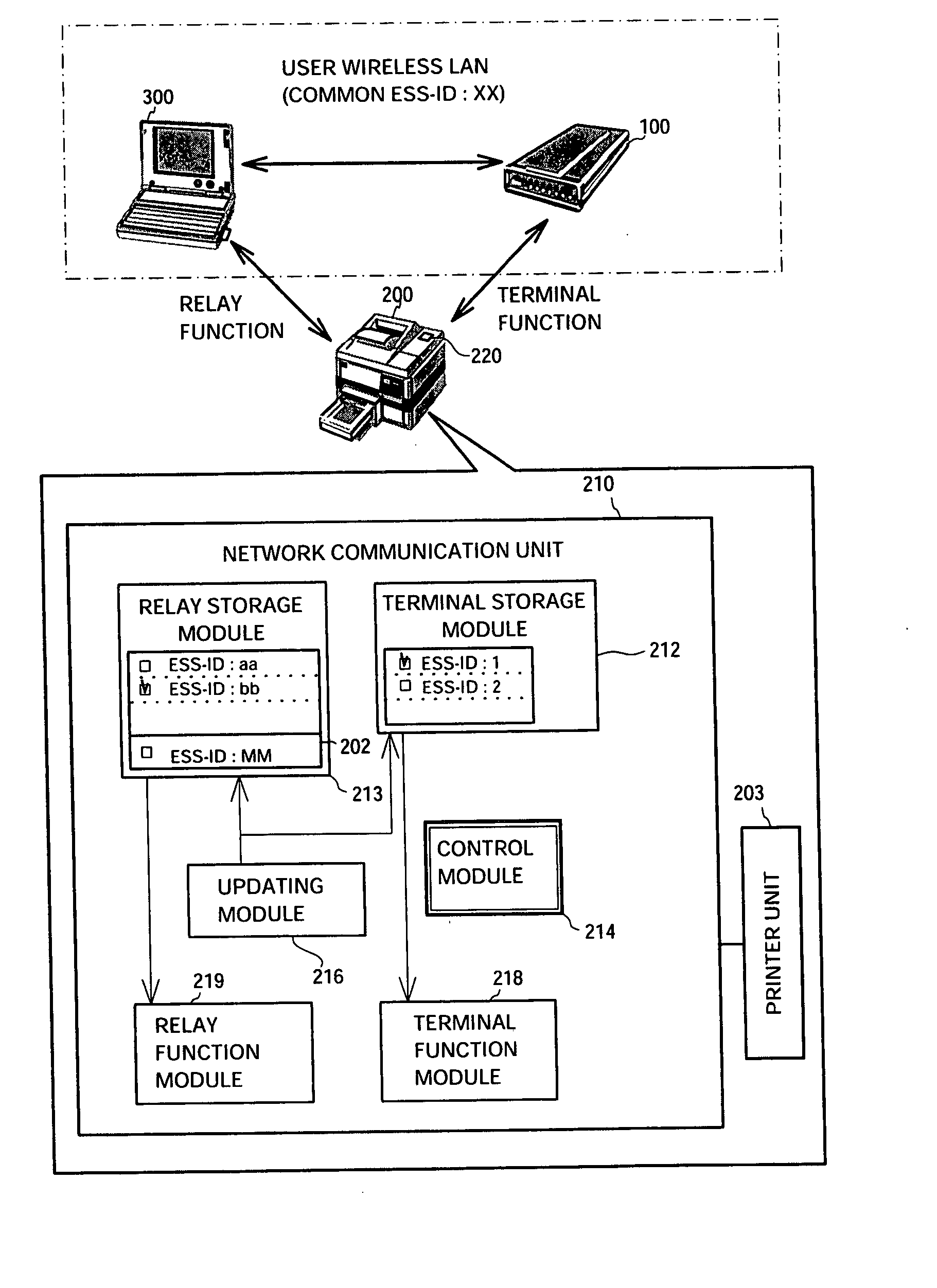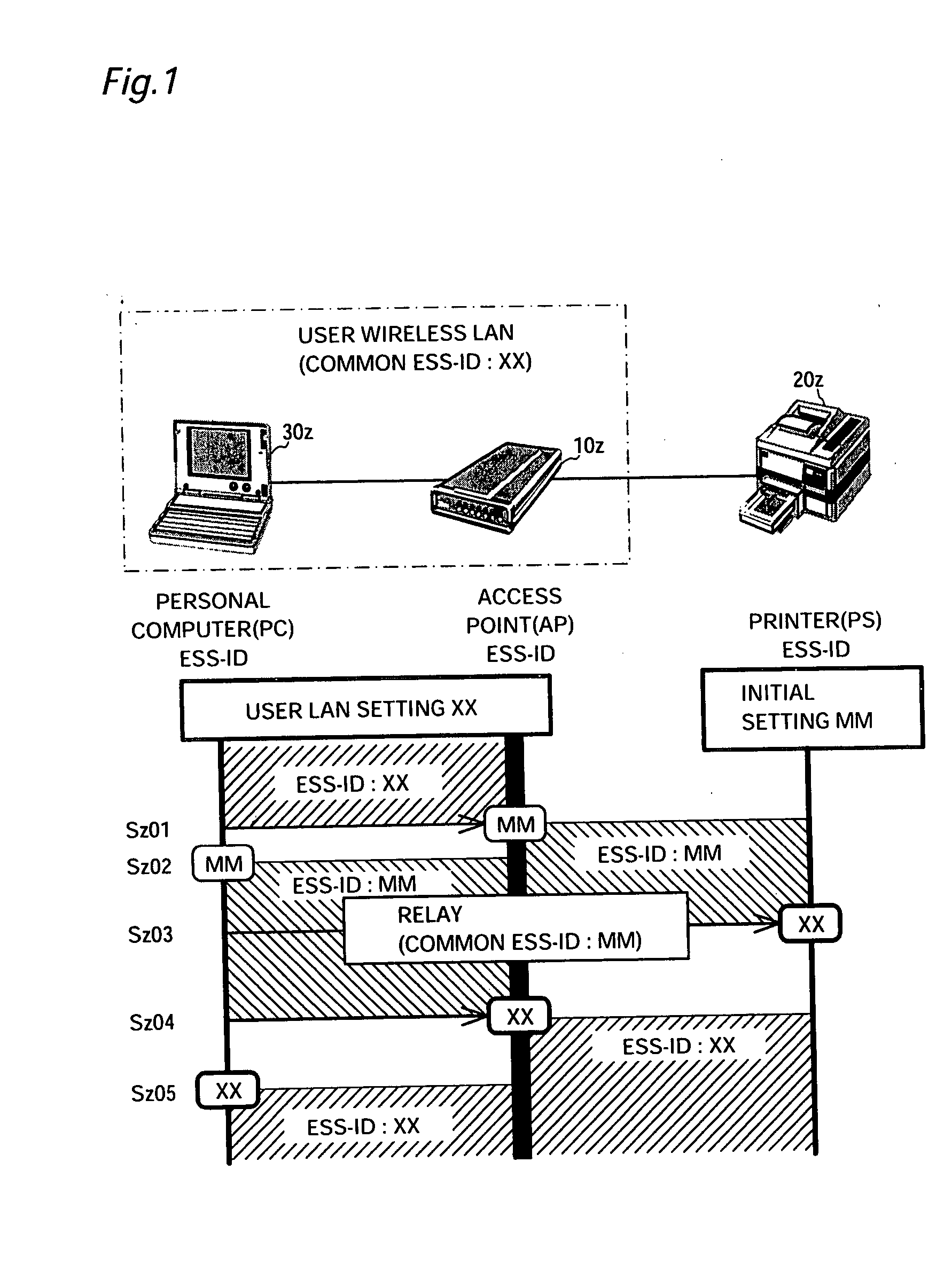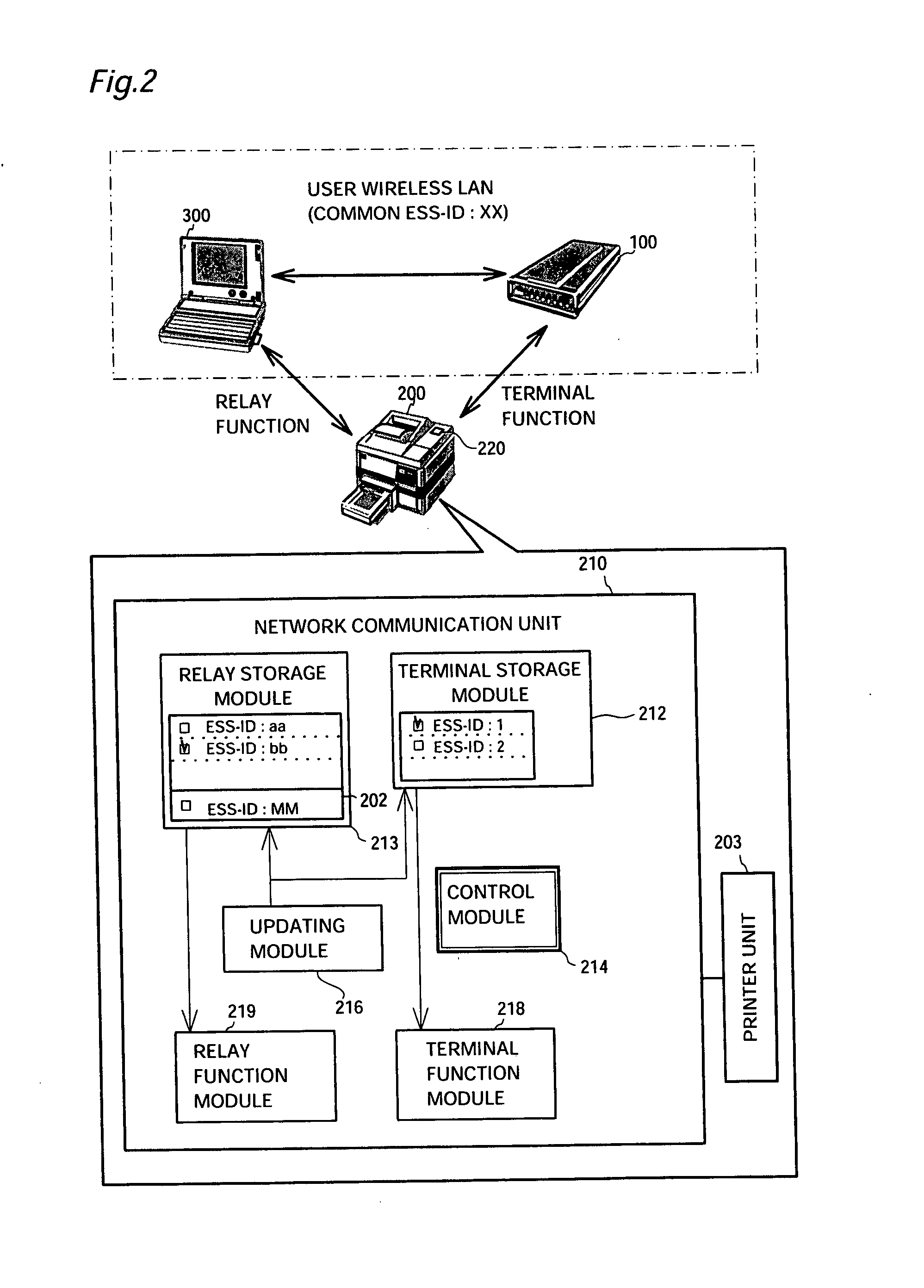Station for wireless network
a wireless network and wireless network technology, applied in wireless commuication services, digital output to print units, multiplex communication, etc., can solve the problems of troublesome setting of ess-id in a device without sufficient input interfaces, troublesome separate cable connection, low connection stability, etc., and achieve the effect of relatively easy re-construction of wireless lans
- Summary
- Abstract
- Description
- Claims
- Application Information
AI Technical Summary
Benefits of technology
Problems solved by technology
Method used
Image
Examples
first embodiment
A. First Embodiment
[0044]FIG. 2 illustrates the construction of a printer 200. The user wireless LAN is constructed to include an access point 100 and a personal computer 300. The personal computer 300 is one of the stations currently involved in the user wireless LAN and sets a common ESS-ID ‘XX’ for the user wireless LAN in the printer 200, based on a user's input. The printer 200 and the personal computer 300 have radio communication modules to attain wireless communication with the access point 100.
[0045] A functional block diagram of the printer 200 is also shown in FIG. 2. The printer 200 has a microcomputer including a CPU and memories. The respective functional blocks illustrated in FIG. 2 are attained by software executed by the CPU in this embodiment, although these functional blocks may be actualized by hardware.
[0046] The printer 200 has a printer unit 203 and a network communication unit 210. The printer unit 203 is the functional block to carry out printing functions...
second embodiment
C. Second Embodiment
[0073] The following describes a second embodiment of the present invention, where the control module 214 realizes the switchover control function, by which the terminal function module 218 is temporarily ceased and the relay function module 219 is activated at a preset timing even after the acquisition of the ESS-ID. In the second embodiment discussed here, the ESS-ID of the printer 200 is supposed to be transferred to an additional printer PS2 (500). This series of processing is carried out in response to a click of the AP function extension checkbox 263 included in the ESS-ID input window 260.
[0074]FIG. 6 schematically illustrates the process of transferring the ESS-ID in the second embodiment, with a timing chart 800 of processing. The printer 200 has acquired in advance the common ESS-ID for the user wireless LAN as discussed previously in the first embodiment. The printer 200 may continue the wireless communication as the access point even after the acquis...
PUM
 Login to View More
Login to View More Abstract
Description
Claims
Application Information
 Login to View More
Login to View More - R&D
- Intellectual Property
- Life Sciences
- Materials
- Tech Scout
- Unparalleled Data Quality
- Higher Quality Content
- 60% Fewer Hallucinations
Browse by: Latest US Patents, China's latest patents, Technical Efficacy Thesaurus, Application Domain, Technology Topic, Popular Technical Reports.
© 2025 PatSnap. All rights reserved.Legal|Privacy policy|Modern Slavery Act Transparency Statement|Sitemap|About US| Contact US: help@patsnap.com



